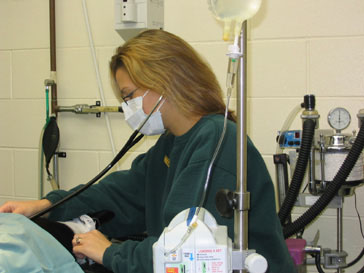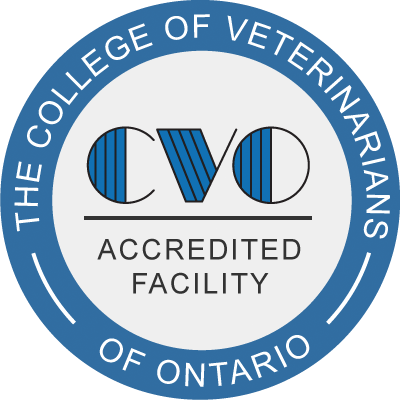
At Parkdale Animal Hospital, we take anesthesia and patient monitoring very seriously. We tailor each anesthetic protocol to each individual pet that requires sedation or general anesthesia. We take previous medical history, current medical conditions and any recent labwork into consideration when working through potential protocols. Anesthetics are chosen based on safety, sedation required and their ability to control pain. Your pet, regardless of procedure (from x-ray imaging to grooming to minor or major surgery), will have a Registered Veterinary Technician by their side monitoring vitals with the help of specialized equipment. We measure heart rate, respiratory rate, depth of anesthesia, temperature, oxygen saturation, expired CO2, blood pressure and follow and ECG tracing. All of these values allow us to determine your pet’s safety throughout any procedure.
Sedation is medication or drugs given to an animal for many reasons, from anxiety to the need for immobilization.
Lighter sedations – or tranquilizers – are often used to overcome stressful events like travel, thunderstorms or fireworks. We also reach for a “fear free” medication protocol for veterinary visits.
Heavier sedations can be used when x-ray images are needed, or for a very superficial surgery on the skin.
All pets requiring sedation will be assessed to ensure that safety is the number on priority.
General anesthesia is used when a patient needs to be rendered unconscious and pain free, Many pet owners worry about their pets being administered general anesthesia. While we cannot guarantee that your pet will not suffer an adverse reaction to the medications we use, we can assure you that with many advances and studies, anesthesia has become relatively safe with the use of monitoring equipment and trained staff.
Each anesthetic case has an exam once admitted to our hospital and bloodwork is reviewed. We have safety checks of our equipment prior to each procedure. To start each procedure, we offer a sedative to help the patient relax and eases the transition to anesthetic administration. In order to protect our patients’ airway we place a breathing tube. This allows us to deliver anesthetic gases to maintain the state of unconsciousness needed to complete the scheduled procedure.
If your pet requires a minor surgical procedure, or even a diagnosic procedure that doesn’t necessarily require sedation – a local anesthetic can be used to help control pain. The local anesthetic would be placed to cause a loss of feeling – or “freeze” the area. Depending on the location, we may pair local anesthesia with a sedation to help keep your pet calm and less likely to move during the procedure.



